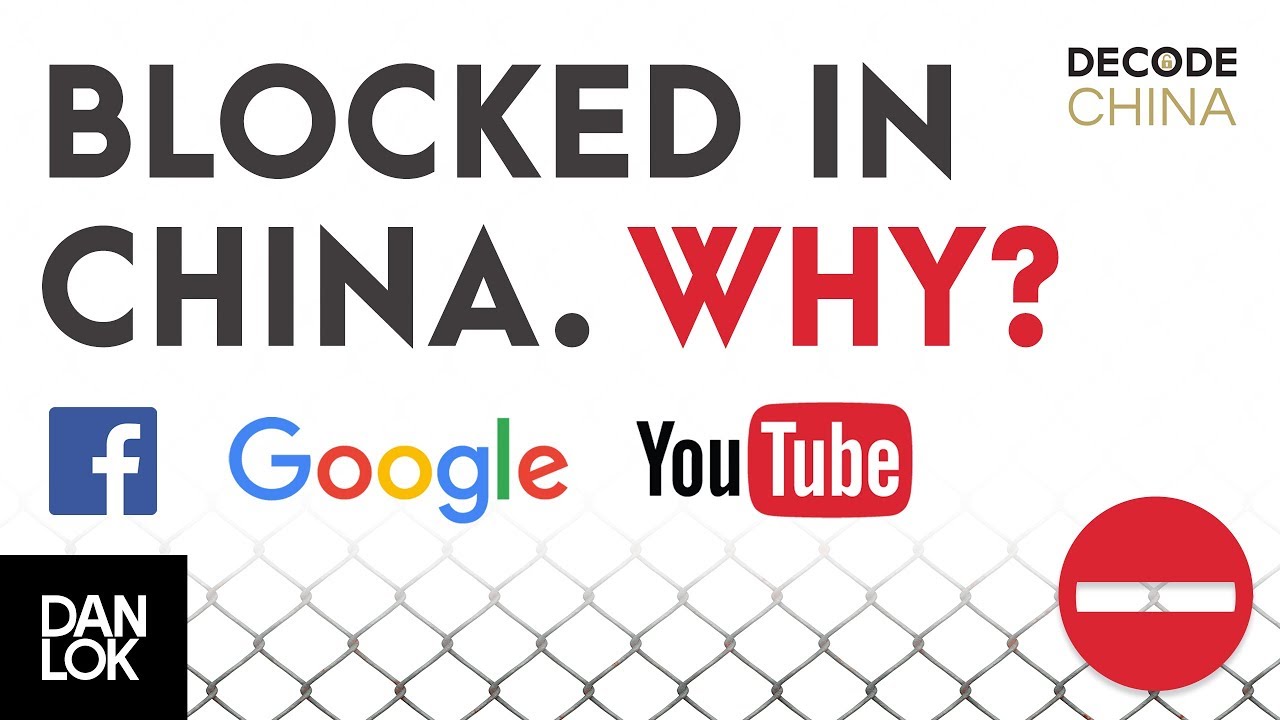China’s digital world is a unique landscape, especially when it comes to video platforms. With over a billion internet users, the demand for video content is immense. However, the government's restrictions have shaped a different ecosystem compared to platforms like YouTube. Instead of global giants, local platforms dominate the scene, offering diverse content tailored to Chinese audiences. Let’s dive into what makes these video platforms tick in China!
The History of YouTube in China

YouTube, the globally recognized video-sharing platform, made its debut in 2005. It quickly became a go-to destination for users seeking everything from cat videos to educational content. However, the story took a twist in 2009 when the platform was blocked in mainland China. This restriction stemmed from the government’s desire to control the flow of information and maintain its narrative.
Before the ban, YouTube had already started to attract a small audience in China. Users could upload, share, and watch videos freely, but this openness clashed with the government’s stringent internet regulations. The Chinese authorities were particularly concerned about the potential for political dissent and the spread of unverified information.
In response to YouTube's ban, several local platforms emerged, such as:
- Vimeo - Although blocked, it briefly attracted users looking for alternatives.
- iQIYI - A leading platform known for its extensive library of films and TV series.
- Youku - Often dubbed the "YouTube of China," it successfully filled the void.
As time progressed, YouTube's absence opened the doors for these platforms to flourish. By offering localized content and adhering to government guidelines, these sites not only attracted audiences but also garnered investment, resulting in significant growth.
In 2010, YouTube attempted to re-enter the Chinese market by launching a localized version, but the initiative fell flat due to the same regulatory challenges that led to its initial ban. The Chinese government's strict controls on the internet reinforced the notion that foreign platforms wouldn't easily find a foothold in the country.
Today, even though there are ways to access YouTube through VPNs, the platform remains largely irrelevant for the average Chinese user. Instead, platforms like Douyin (the Chinese version of TikTok) and Bilibili have become the focal points for video consumption.
In a world where YouTube could have been a significant player, its exit has resulted in a unique video-sharing environment in China. The constraints have not stifled creativity; rather, they have fostered innovative approaches to content creation that resonate with local audiences. As we look ahead, the evolution of these platforms will undoubtedly continue to reflect the complexities of China's digital landscape.
Also Read This: How to Look at Dislikes on YouTube and See Feedback on Videos
3. Current Status of YouTube Access in China
As of now, YouTube remains blocked in China. This restriction has been in place since 2009, and it’s a part of the broader strategy the Chinese government employs to control the flow of information. While many people in the world enjoy the platform for its vast array of content, users in China have had to navigate around these barriers to access the videos they desire.
Curious how people in China manage to watch YouTube? A mix of VPNs (Virtual Private Networks) and proxy servers comes into play. Many tech-savvy individuals and expats use these tools to bypass the Great Firewall, allowing them to access YouTube and other blocked sites. However, this isn't always a foolproof solution; the government frequently cracks down on VPN usage, making it a constant game of cat and mouse.
Moreover, the content available on YouTube can be quite different from what is permissible in China. Videos that criticize the government or certain social issues are generally flagged and removed. This leads to a skewed perception of what is happening globally, as many of these discussions happen outside the Chinese digital landscape.
In recent years, there have been limited discussions about the potential for YouTube to enter the Chinese market officially. However, given the stringent regulations and the need for content censorship, it seems unlikely that YouTube would be able to provide a service that aligns with the Chinese government's standards.
Also Read This: Are YouTubers Considered Celebrities? A Deep Dive into Digital Fame
4. Alternative Video Platforms Popular in China
With YouTube off the table, China has seen a surge in homegrown video platforms that cater to its vast population. These platforms not only fill the void left by YouTube but also reflect the unique tastes and cultural nuances of Chinese audiences. Let’s take a look at some of the most popular alternatives:
- Bilibili - Known as the "Avenue to the ACG (Anime, Comics, and Games) World," Bilibili is a vibrant platform featuring a mix of user-generated content, live streaming, and professional videos. It’s hugely popular amongst younger audiences, particularly for its interactive features like bullet comments that allow viewers to leave real-time feedback.
- TikTok (Douyin in China) - While TikTok is known globally for its short videos, the Chinese version, Douyin, offers a distinctly different experience. Users can explore a wide variety of content, from DIY tutorials to cooking shows, often featuring local influencers.
- Youku - One of the oldest video platforms in China, Youku is often referred to as the "Chinese YouTube." It hosts a mix of user-uploaded content and licensed movies and TV shows, making it a go-to for entertainment.
- iQIYI - Sometimes dubbed the "Netflix of China," iQIYI offers a plethora of films, TV dramas, and variety shows. Its extensive library and high-quality streaming have made it a favorite among binge-watchers.
These platforms not only provide entertainment but also play a significant role in shaping social trends and discussions within China. With localized content and community engagement, they have become integral to the digital experience for millions of users.
In summary, while YouTube may be out of reach for most in China, a rich landscape of alternative video platforms has emerged, catering to diverse tastes and ensuring that users have plenty of options to explore and enjoy their favorite content.
Also Read This: How Old Is Ty from That YouTube Family and What Are His Most Popular Videos
5. Government Regulations on Video Content
In China, the landscape of online video content is shaped significantly by stringent government regulations. The State Administration of Radio and Television (SARFT) plays a crucial role in overseeing all forms of media, including streaming platforms. The regulations often focus on content censorship, requiring platforms to align with the government's ideologies and cultural values.
For instance, the Internet Audio-Video Services Regulation mandates that video content must not undermine national unity, promote violence, or propagate content that is deemed inappropriate. This means that creators must carefully navigate their topics, tone, and even visuals to avoid running afoul of these guidelines.
Platforms like Bilibili and Douyin (the Chinese counterpart of TikTok) have developed robust systems to filter content proactively. Here are a few key regulations:
- Content Review Processes: All videos must undergo a review process to ensure compliance, often leading to delays in content availability.
- Registration Requirements: Creators need to register with the government, which adds a level of oversight that can stifle creativity.
- Age Restrictions: Platforms must implement controls to prevent minors from accessing inappropriate content.
These regulations create a challenging environment for video creators, as they must balance creativity with compliance. Many creators have found innovative ways to express their ideas without crossing the lines, often using satire or indirect references to convey messages subtly.
However, this environment can also lead to self-censorship, where creators preemptively alter their content to avoid repercussions. The fear of being shut down or having content removed can stifle the boldness and diversity that usually characterize vibrant video platforms.
Also Read This: Switching YouTube Accounts on Your Browser: Troubleshooting Login Problems
6. Impact of Censorship on Content Creators
Censorship in China has far-reaching consequences for content creators, affecting not just their work but also their livelihoods. The constant threat of video removal or account suspension can lead to a culture of caution, where creators second-guess their ideas and expressions.
Many creators have reported feeling pressured to conform, which can hinder the creative process. Instead of focusing on innovation, they're often preoccupied with compliance and how to present their content in a way that avoids government scrutiny. This has led to a few notable impacts:
- Loss of Authenticity: Creators often dilute their messages or avoid sensitive topics altogether, leading to content that feels less genuine.
- Reduced Diversity: With many creators opting for safer, more compliant content, the variety of voices and perspectives available to audiences diminishes.
- Monetization Challenges: Many platforms have strict policies about what can be monetized, making it harder for creators to earn a living.
Interestingly, some creators have turned these challenges into opportunities. By using creativity and humor to skirt around restrictions, they’ve managed to build dedicated followings. For example, comedians might focus on everyday life in a way that resonates with viewers while avoiding contentious issues. This adaptability showcases the resilience of creators, but it also underscores the limitations imposed by censorship.
As the landscape of video content continues to evolve, the impact of government regulations and censorship remains a significant force shaping who gets to speak and what stories get told. Finding the balance between compliance and creativity will be a critical challenge for creators in the coming years.
Also Read This: What Are the Best Alternatives to YouTube for Watching Videos?
7. Future Trends for Video Platforms in China
The landscape of video platforms in China is constantly evolving, influenced by regulations, technological advancements, and changing user behaviors. As we look ahead, several trends are likely to shape the future of video sharing in this unique environment.
- Increased Integration of AI and VR: As artificial intelligence continues to mature, we can expect platforms to leverage AI for content curation, personalized recommendations, and even automated content generation. Virtual reality (VR) will also play a significant role, offering immersive experiences that could redefine how users engage with video content.
- Enhanced Focus on Live Streaming: Live streaming has seen massive growth in China, particularly during the pandemic. Platforms will likely invest in improving their live streaming features, integrating e-commerce capabilities to allow real-time shopping experiences during broadcasts.
- Localized Content Creation: With China's diverse culture and languages, there will be a growing emphasis on localized content. Video platforms may prioritize regional creators to cater to specific audiences, making the content more relatable and engaging.
- Regulatory Adaptations: As regulations evolve, platforms will need to adapt quickly. This may involve increased collaboration with government entities to ensure compliance while finding innovative ways to maintain user engagement and content diversity.
- Collaborations with Traditional Media: The line between traditional media and online platforms is blurring. Expect to see more partnerships between video platforms and traditional broadcasters, allowing for cross-promotion and the blending of content styles.
Ultimately, the future of video platforms in China will be characterized by a blend of innovation and compliance. As technology advances and user preferences shift, these platforms will continue to adapt, creating an ever-changing landscape for both creators and viewers.
8. Conclusion: Navigating Video Sharing in a Restricted Environment
Navigating the world of video sharing in China is undoubtedly a complex journey. With strict regulations and a unique set of challenges, content creators and consumers alike must find their footing in this carefully curated digital space.
Despite the obstacles, the opportunities are vast. Platforms like Bilibili and Douyin have carved out niches that cater to specific audiences, fostering communities around shared interests. These platforms not only provide entertainment but also serve as powerful tools for education, social engagement, and even activism.
As users become more adept at maneuvering through the restrictions, we can expect to see a rise in creative content strategies. For instance, creators may employ storytelling techniques that resonate with local culture while cleverly adhering to regulatory guidelines. This adaptability could lead to a richer, more diverse array of content that still respects the constraints of the environment.
In summary, while the restrictions on video sharing in China present challenges, they also encourage innovation and community building. By embracing these dynamics, creators and viewers can continue to thrive in a vibrant landscape that, despite its limitations, remains filled with potential.
 admin
admin








